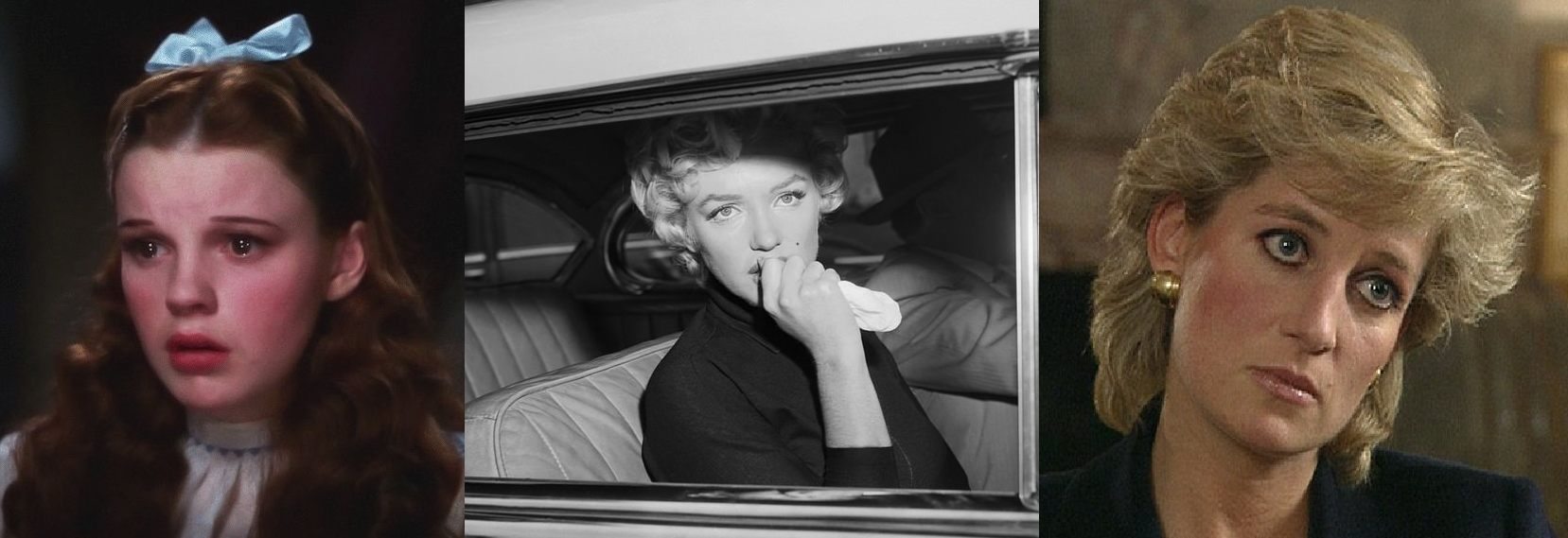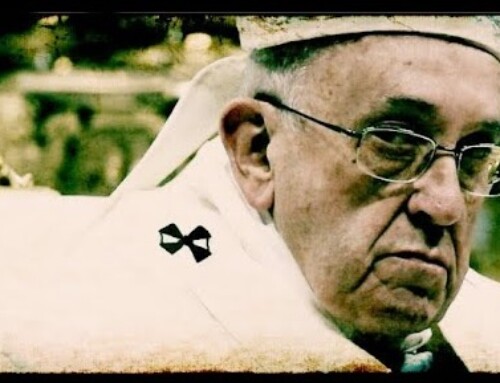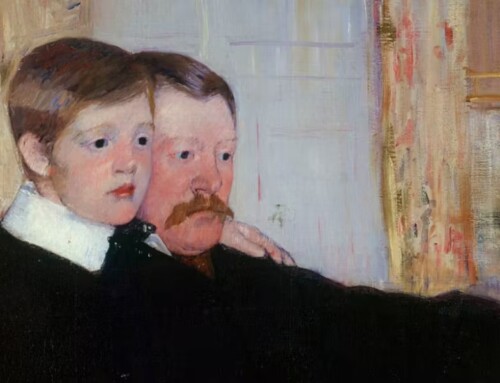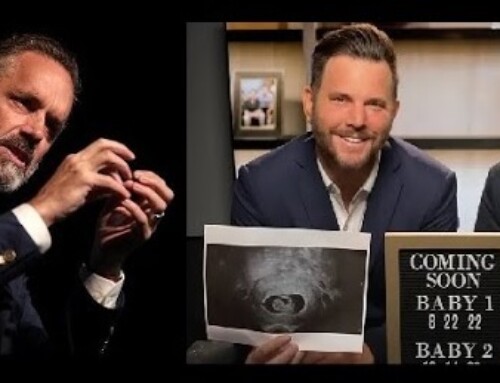Judy Garland, Marilyn Monroe, and Princess Diana are arguably the three most famous and celebrated women of the 20th Century; they are also three of the greatest of the gay icons; for, gay men have a penchant towards idolizing the so-called diva: usually entertainers with larger than life personas that lend themselves to be caricatured by drag-queens – Bette Davis, Joan Crawford, Bette Midler, Madonna, Beyonce. But, why, in particular have Garland, Monroe, and Diana received special adulation? For the most part, subliminally it has to do with that fact that each woman experienced what I have labeled the “classic gay boy syndrome:” childhoods filled with tragedy and disappointment: the super-talented, but awkward Garland was pushed into the spotlight by a controlling mother and bisexual father; the father-less Monroe was raised in a series of foster-homes after her mother was committed to a sanitarium; after the rather ugly and messy divorce of her parents, with the father winning custody, the tom-boyish Diana grew up a shy girl who, before her birth, everyone hoped would be a boy.
Later in life, all three women married much older authoritarian “daddy” types: Garland to director Vincent Minnelli, Monroe to playwright Arthur Miller, and Diana to Prince Charles. In these father-figures, each was trying to fill the loneliness of an absent or unloving father, the loss and isolation of a chaotic and uncertain childhood, or to heal the hurt from early experiences with a grossly dysfunctional family. Tragically, as is the case with all tortured souls who try to self-heal themselves – all of these men proved entirely too-human and surely incapable of providing the super-human love each needed. For instance, several of Diana’s many biographers remarked that she had a “wounded, insatiable need for love…as wide as the sky.” And, Diana, has probably proved to be the most tragic – as the hapless Charles reacted coldly and with instinctive indifference when confronted by the emotional neediness of Diana – his inability to sympathetically relate causing her near madness that resulted in several pathetic botched suicide attempts. In the end, her life became a heartbreaking melodrama revealing the great lengths someone will go just to momentarily escape the painful childhood memories of abandonment and neglect.
Throughout their turns in the limelight – especially Judy Garland and Princess Diana kept gay men as their closest confidants: the likes of Peter Allen and Elton John all served as platonic pal and priest for their prospective friends: oftentimes, usurping the function of a husband – except, without the sexual component. Why? With male homosexuals, tormented and traumatized women feel an immediate kinship; with those who have also suffered – it is a bond of the abused. Yet, these relationships ultimately prove to be counter-productive: as the shared commiseration of pain never leads to healing. The true love and understanding that they all need remains elusive. And, instead of resolution, in these relationships, and in the continuing adoration of homosexual men towards gay icons, there is only an uneasy realization that shared misery offers little peace.
This tragedy was most horrifically materialized in the final days of Princess Diana: a constant flurry of activity, jet-set bashes, exotic holidays, and a devolving series of increasingly reckless boyfriends – exposing a desperate and fatalistic dance with danger that inevitably caused her death; this same obsession in gay men eventually witnessed the rise of AIDS.
In a sense, Princess Diana, the little 7-year old girl abandoned by her mother, who relatives and friends say hopelessly waited for her return, never recovered from that loss and as result – became a symbolic metaphor for the gay community which never abandoned her and on which she often relied upon for comfort and strength. Like gay men, she turned towards the mythic image of a compassionate and self-confident savior – the fabled prince who would be a lover and rescuer. In her teenager years, Diana was a voracious reader of Barbara Cartland’s historical romance novels. A similar preoccupation with fantasy runs through gay men in their childhood reliance upon pornography. Also, as is the case with not a negligible number of male homosexuals, Diana tried to escape reality through the theatrical arts – in her case, in dance.
Yet, this dream of salvation faded and the disappointment caused self-destruction. With Diana, this frustration emerged in her final choice of companion – middle-aged playboy Dodi Fayed, the son of a controlling megalomaniac billionaire. After Diana and Fayed’s death, former girlfriends remembered his recklessness and impulsive nature; according to one report: “He had been a rich, lonely child, and his financial dependence on his father stunted him as an adult. Even in his 40s, friends called him a ‘kid’ or a ‘boy.’” Diana and Dodi – two broken individuals seeking solace from the other. Here, her ill fated wanderings recall the constant drifting of the male homosexual through the crowded gay bars – looking for a heroic figure and only encountering other wounded human beings.
But, oftentimes, as with gay men, those closest to Diana were unwilling or unable to help her. Comparable to the facilitating and co-dependent family and friends that surround the homosexual male, Diana elicited immediate sympathy from those who desired to be near her, but little else. She had the same almost irresistible combination of charm, incredible empathy, and hopelessness that makes gay men so undeniably attractive.
For awhile, as the Princess of Wales, Diana spoke about how involvement in her various charities eased the emotional ordeal she was experiencing. Later, she continued to seek out unpopular causes to champion, but it evidently wasn’t enough. The love she so desperately needed – she never found. The coincidence of Diana’s death occurring only a few days before that of Mother Teresa reveals the parallels and divergence in the two women’s lives. Mother Teresa, who lost her father when she was 8-years old, becoming a child-of-want, she focused her attention at a very young age towards prayer and service. Although Diana tried to ultimately overcome the trauma of her childhood in her often selfless compassion for the downtrodden, in the end – she couldn’t fully tear away from the delusions of fame and glamour. Sadly, the idols of gay men were unable to save themselves.







Thank you for explaining this.
This is sad. The world is so sad. How did you come out of the darkness Joe? I'm worried about my children
Love your blog, Joseph. I have learned so much. God bless you.
Its too bad Diana couldn’t find good strong friends and find her way back to Christ. One thing that I found disturbing in her life was her dependence on Astrology. I did like Diana but as you say she never really found true piece mind or peace in her life. There is much to see in this. Gives one insight. Thanks for that insight Joseph.
Diana was a sad soul indeed — one torn between very idealistic charitable impulses and a classically modern focus on self and the therapeutic culture. Some of this would arise from her upbringing in an upper class bubble, but also we shouldn’t forget how very young she was when she was lured into the maelstrom of the royal culture, a chess piece in the game of “suitable marriage to get the heir and the spare” — she was so young and romantic she took it at face value, and only found out what a sham it was when it was too late to back out (something she considered doing just days before the wedding). Because she was so blatantly used for state purposes, I have always felt she deserved sympathy despite a lot of manipulative and morally questionable acts on her part. But I would also maintain that she had some qualities of character to which neither the gay icons or their gay fan base can lay claim: she had enough healthy, genuine love in her heart to have produced two sons who have never for an instant doubted how much she loved them. She went to great lengths to raise them with some semblance of normality and consideration for others. To see her with them was to know what true maternal love looks like, and it seems to have resulted in a couple of decent children. Score one for the Princess!